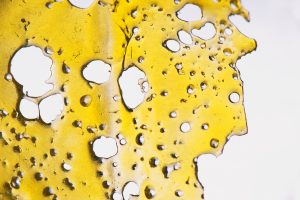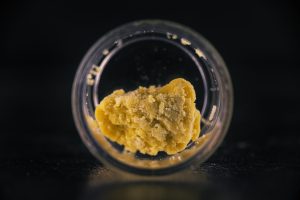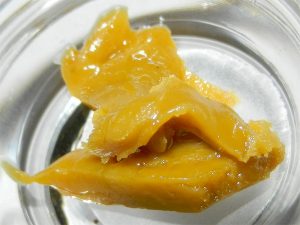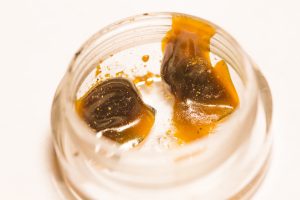Dabs, otherwise known as cannabis concentrates, come in many different shapes, sizes and forms. Commonly described as sticky, the concentration of cannabis resins can also be very hard and stable. The consistencies range from hard shatters, sticky saps, dry crumbles and everything in between. Dabs can vary from translucent to opaque.
Differences between concentrates depend on a few different factors like changes in temperature, moisture and physical agitation. Solid THCA is agitated to precipitate from the oil and then crystallizes. Hash oil converts from a single-phase substance to a multiphasic, amorphous substance, which simply means it goes from clear to opaque. Terpenes play a major role in the outcome of consistency of concentrates since they act as solvents, and the more present, the more liquified your product will be.
The way that you handle each type is different since some are to be stuck to a tool, while others will need to be scooped with something that’s shaped like a spoon. If you’re not already equipped with one, try to get a multiuse dab tool in order to accommodate the different situations you might find yourself in. Here are several different types of dabs that you’ll eventually come across.
Shatter

Marijuana concentrate known as Shatter.
Shatter is what is referred to as very stable and glass like concentrates that more than likely will break into many pieces when dropped on a hard surface. Some shatter has some adhesive properties to it, while other kinds will be smooth to the touch. In order to get some onto your nail, either drop it in with your fingers, or heat your dabber a little with a lighter to cause the extracts to melt to the tool. A lot of people try to find shatter because it is thought to be the purest substance. Wrap your shatter in parchment paper to store and move it.
Crumble

Marijuana concentrate known as Crumble.
Crumble has the driest consistency of all concentrates. Depending on how much it has been broken down, crumble should be able to break into desirable sized dabs before a session. If you’re the type that likes to get hands on, you’ll have no problem dunking this type in without the use of a tool. Try to avoid using parchment paper and instead keep your crumble in a silicone or glass container with a lid.
Budder

Marijuana concentrate known as Budder
Budder takes on the space between wax and crumble with a consistency that resembles peanut butter. This form is made by whipping the original sap or shatter that you’re working with. Shatter eventually breaks down into budder with time and a little bit of heat. Budder can represent an abundance of terpenes, but can also mean that the material wasn’t purged enough. If you’re having trouble getting some on your tool, try sticking it in the freezer for about 15 minutes to solidify it. Budder is safe to keep it in either a container or parchment paper.
Wax

Marijuana concentrate known as Wax
Wax is a sticky form of concentrates that should only be handled with a (clean) dab tool. This type will not work with your hands and will end up getting on everything. Extracts with decarboxylated THC usually ends up sappier, and the same tends to go for CBD as well, so don’t be discouraged from everything that isn’t hard shatter. Like budder, you should be safe to keep wax in any type of storage that you have available for your dabs.
Oil

Marijuana concentrate known as Oil
Sometimes you’ll get cannabis concentrates that are are made with C02 instead of Butane. This usually gives way to a slightly runny oil that tends to come in a syringe to guarantee practical application. There’s a definite difference in taste when it comes to the comparison of BHO vs. CO2, but it’s all about personal preference. You’ll probably want to keep oil in the syringe or a silicone container that you have lying around.
(2804)





Leave A Reply